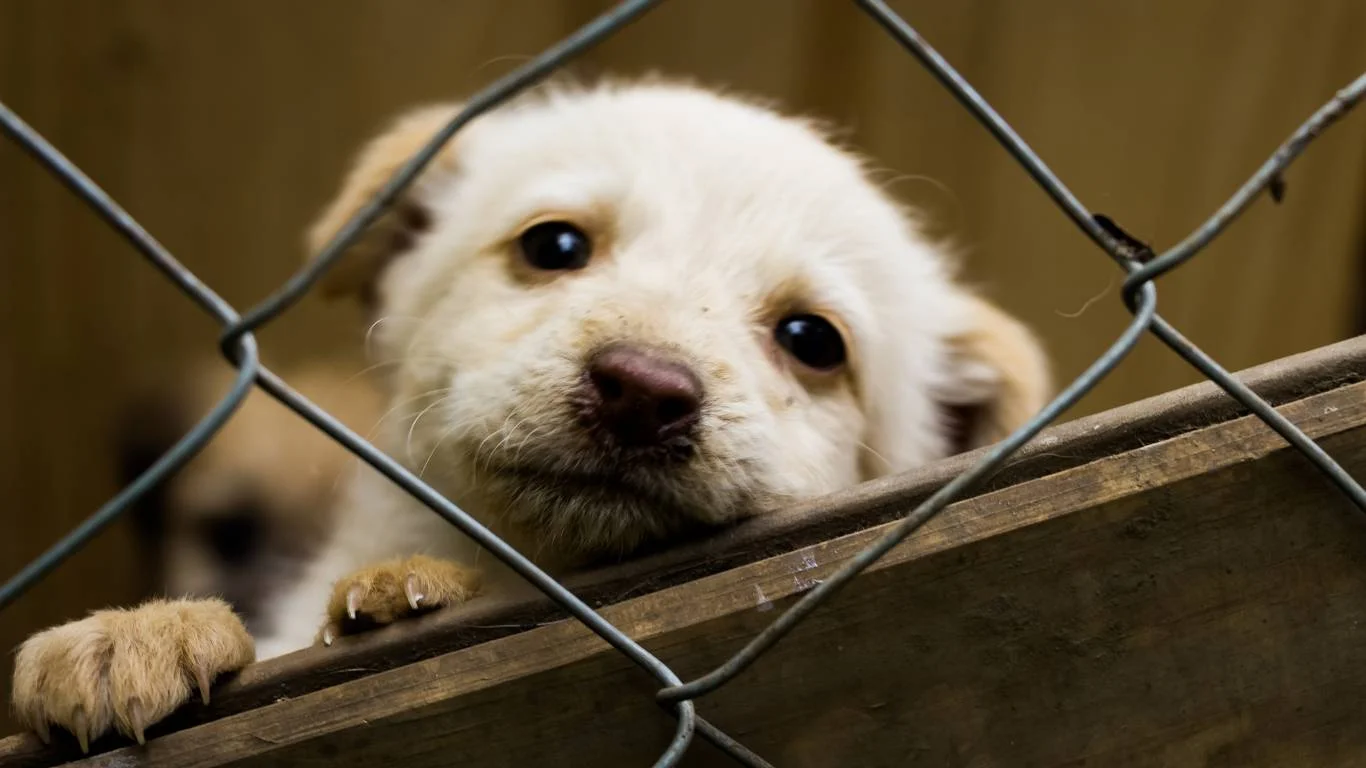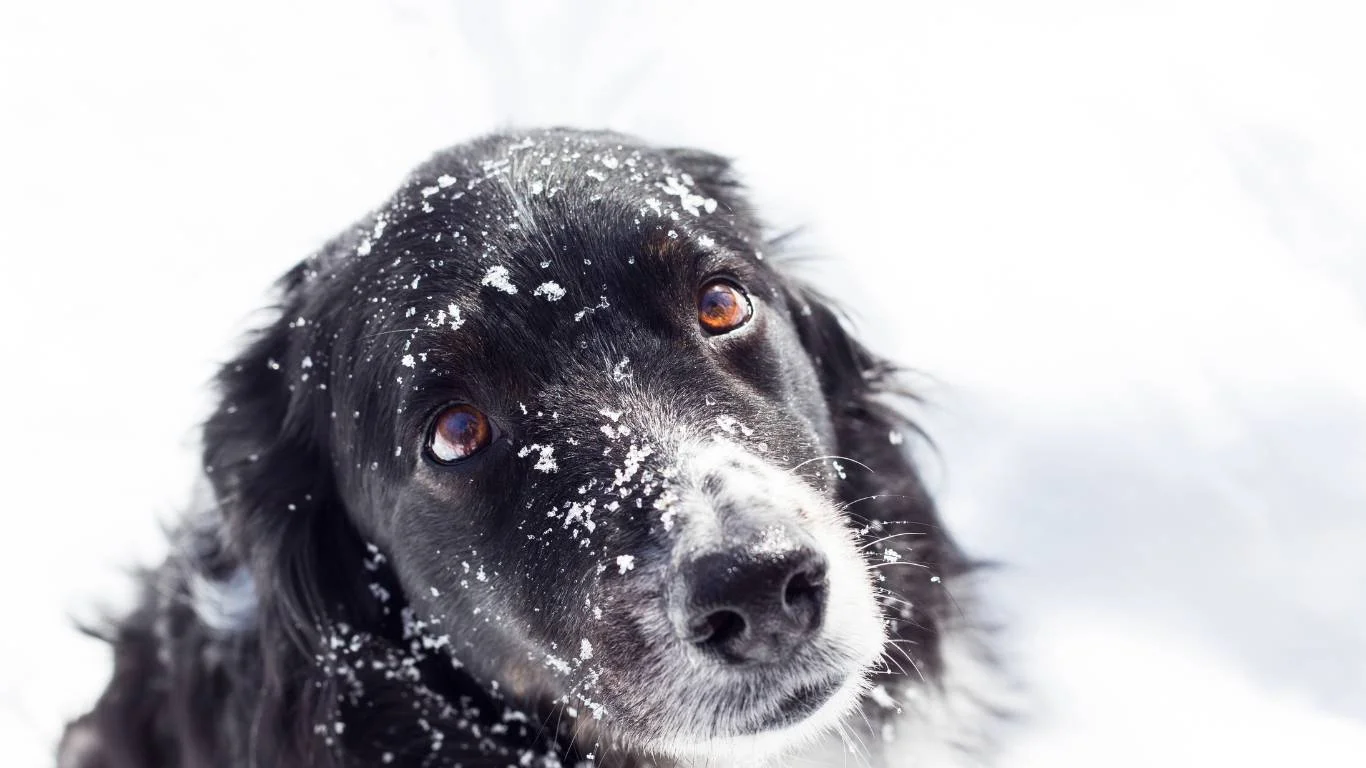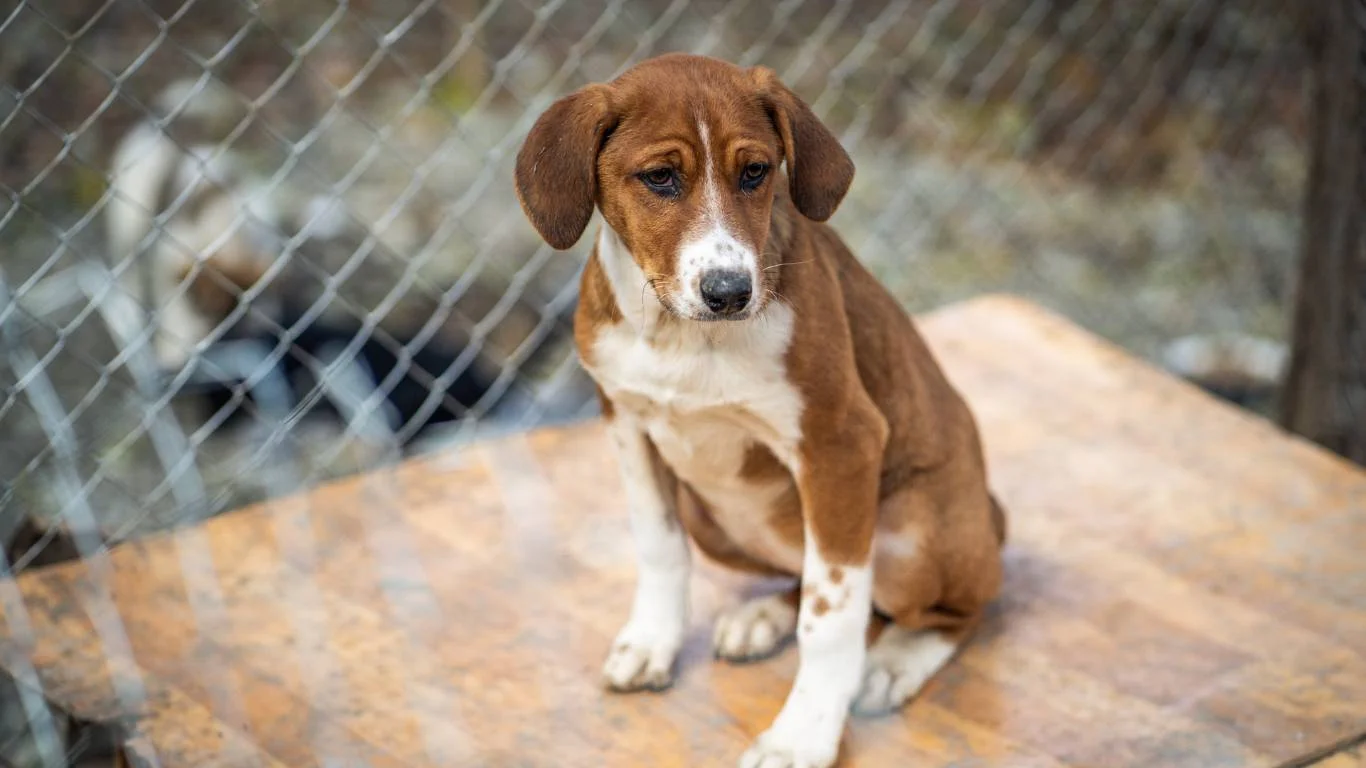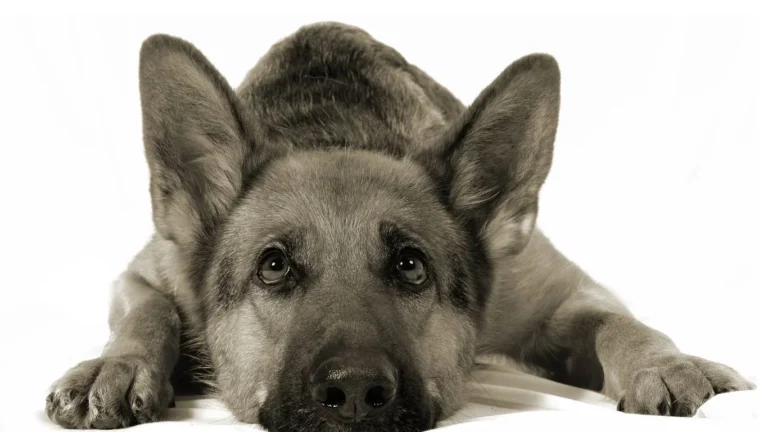Why is My Dog Drinking Excessive Amounts of Water? Causes and Solutions
As a veterinary assistant with a focus on nutrition, I’ve seen it all when it comes to our furry friends and their hydration habits. So, let me ask you – has your dog been drinking more water than usual? If so, you’re probably wondering, why is my dog drinking excessive amounts of water? It’s a common concern for many pet owners, and rightly so. While it may seem like just a simple issue, excessive thirst in dogs can sometimes point to an underlying health problem. Whether it’s a sudden change in behavior or a long-term habit, it’s important to pay attention. Let’s dive into why this might be happening and what you can do about it.
What Is Considered “Excessive Drinking” in Dogs?

Before we explore the potential reasons behind your dog’s excessive thirst, it’s essential to understand what “excessive drinking” actually means. In general, dogs should be drinking between 30 to 50 milliliters of water per kilogram of body weight each day. If your dog is consuming more than that on a regular basis, it’s time to investigate further. But remember, every dog is different, and factors like their diet, age, and activity level can all influence their water intake.
For example, a highly active dog or one on a dry kibble diet may naturally drink more water than a sedentary pup eating wet food. So, don’t panic if your dog is chugging more water after a walk or play session. But if you’re noticing that they seem thirsty all the time, even when they haven’t been active, it’s worth a closer look. Let’s break down some possible reasons for their increased water consumption.
Potential Causes of Excessive Water Drinking in Dogs

1. Diabetes Mellitus
One of the more serious reasons for a dog to drink excessive amounts of water is diabetes mellitus. This condition occurs when your dog’s body can’t properly regulate blood sugar, leading to higher-than-normal blood sugar levels. In response, your dog’s kidneys work overtime to flush out the excess glucose, which can result in an increase in urination. More frequent urination leads to more thirst. If your dog is drinking and urinating a lot, diabetes might be the culprit.
Along with excessive drinking, look out for other signs like weight loss despite a good appetite, lethargy, and cloudy eyes. If you suspect your dog may have diabetes, it’s best to consult your vet for blood tests and a proper diagnosis. Early detection can help prevent complications.
2. Kidney Disease
Another condition that could cause your dog to drink a lot of water is kidney disease. The kidneys play a huge role in filtering out toxins and balancing fluid levels in the body. When they’re not working properly, your dog may begin to drink more in an attempt to compensate for the fluid loss through increased urination.
Look for signs like a decrease in appetite, vomiting, weight loss, or a noticeable change in the color or frequency of their urine. If you notice any of these signs along with the excessive thirst, a visit to the vet is crucial. Kidney disease can be managed, but the earlier it’s caught, the better the outcome.
3. Urinary Tract Infections (UTIs)
UTIs are another common reason why dogs may start drinking more water than usual. While a UTI doesn’t directly cause excessive thirst, the irritation and discomfort that comes with a urinary infection can lead your dog to feel more inclined to drink. The infection can also result in increased urination, which, again, causes your dog to drink more to keep up with the loss of fluids.
If your dog is also having trouble urinating, seems to strain when going potty, or has a strong odor coming from their urine, it’s time to see your vet. UTIs are typically treatable with antibiotics, and once the infection clears up, the excessive thirst should resolve as well.
4. Medications
If your dog has recently been prescribed medication, it could be affecting their hydration levels. Some medications, especially corticosteroids and diuretics, can cause increased thirst as a side effect. While these medications can be necessary to treat certain conditions, they often come with the trade-off of increased urination and thirst.
If your dog is on a new medication, check with your vet to see if excessive drinking is a known side effect. Sometimes adjusting the dosage or switching medications can help balance things out. Never stop or change your dog’s medication regimen without consulting your vet first!
5. Heat and Activity

It’s important to consider environmental factors as well. If it’s hot outside or your dog has been more active than usual, they’ll naturally drink more water to stay hydrated. Dogs can’t sweat like humans, so they rely on panting and drinking to regulate their body temperature. If your dog has been playing hard in the heat, expect them to need extra water to cool down and stay hydrated.
On the flip side, if your dog’s drinking habits seem unusual despite little activity or temperature changes, it’s worth investigating other potential health concerns. If you’re unsure, keep track of their water intake and note any other symptoms you may observe. This will help your vet narrow down the cause when you bring your dog in for an exam.
When Should You Worry About Your Dog’s Excessive Thirst?

It’s not always easy to know when a little extra water drinking is something to be concerned about or just a passing phase. After all, as I mentioned earlier, various factors can influence how much water a dog drinks. However, if your dog is consistently drinking more than usual and showing other concerning signs, it might be time to consult your vet.
One key sign that something may be wrong is a sudden and noticeable increase in water intake. For instance, if your dog used to drink a moderate amount but suddenly starts guzzling down twice as much, it could be a red flag. Add to that symptoms like lethargy, vomiting, or changes in appetite, and it becomes even more important to get them checked out.
Another indication that excessive drinking may be a symptom of an underlying health problem is if it’s accompanied by a change in your dog’s behavior. If they’ve been more irritable, sleeping a lot more than usual, or having trouble moving around, it could suggest that something is off. Remember, pets can’t tell us what’s wrong, so paying attention to those subtle shifts in behavior is crucial for their well-being.
How Can Your Vet Diagnose the Cause of Excessive Drinking?

If you’ve noticed any of the signs I just mentioned and you’re concerned about your dog’s health, the best course of action is to schedule a visit with your vet. They’ll perform a thorough exam to pinpoint the cause of the excessive drinking and urination. The diagnostic process may include blood tests, urinalysis, and possibly an ultrasound or X-rays, depending on what your vet suspects is going on.
In my experience, blood tests are typically the first step when diagnosing conditions like diabetes, kidney disease, or infections. These tests can give your vet a clear picture of your dog’s internal health and provide valuable insight into what’s happening inside their body. For example, high glucose levels in the blood can indicate diabetes, while abnormal kidney values may suggest kidney disease.
Don’t worry—your vet won’t just jump into expensive tests without a reason. They’ll likely start with a thorough physical exam and ask you detailed questions about your dog’s recent behavior, diet, and lifestyle. The more information you can provide, the easier it will be for them to narrow down the potential causes.
What to Expect During Your Vet Visit
The Exam
When you bring your dog to the vet, expect them to conduct a complete physical exam. This will typically include checking your dog’s vital signs, examining their eyes, ears, and teeth, and feeling for any abnormalities in their abdomen or joints. They’ll also likely ask about your dog’s history, including when you first noticed the increased thirst and whether any other changes in behavior have occurred.
Tests and Diagnostics
If your vet suspects something like kidney disease or diabetes, they may order blood work and urinalysis. These tests help rule out or confirm common conditions like infections, kidney dysfunction, or hormonal imbalances. In some cases, imaging (like X-rays or an ultrasound) may be needed to get a better look at your dog’s internal organs and rule out physical blockages or other issues.
It might sound a bit daunting, but trust me, it’s for the best. Early detection of health conditions makes all the difference when it comes to managing and treating your dog’s health. Plus, the faster you identify the issue, the sooner your dog can start feeling better!
Follow-Up Care
Depending on the diagnosis, your vet will outline a treatment plan. If the cause is something like a urinary tract infection, it might be as simple as a round of antibiotics. For more complex conditions like diabetes or kidney disease, your dog may require ongoing care, including medication, special diets, or regular check-ups. As a veterinary assistant, I’ve seen many cases where early diagnosis and consistent care lead to much better outcomes for our furry friends.
Preventing and Managing Excessive Thirst in Dogs
1. Keep Your Dog Hydrated in Healthy Ways
One of the simplest ways to ensure your dog stays healthy is to make sure they have constant access to fresh water. This might seem like a no-brainer, but sometimes dogs can be picky or forgetful about drinking. For example, I’ve worked with dogs who just weren’t interested in drinking water, and it took a bit of creative thinking to encourage them. Try placing multiple water bowls around your home, or use a pet fountain to make the water more enticing for them. Clean water is a must, too, so remember to wash the bowls regularly to prevent bacteria buildup.
2. Regular Vet Visits Are Key
Preventative care goes a long way when it comes to keeping your dog healthy. Regular vet visits—at least once a year—are crucial for catching any potential problems early on. During these visits, your vet will monitor your dog’s overall health, check for early signs of chronic conditions, and give you advice on how to keep your dog in top shape. Prevention really is the best medicine!
3. Watch Your Dog’s Diet
A balanced, nutritious diet plays a huge role in your dog’s overall health, including their hydration levels. Dogs on dry kibble diets may need to drink more water because dry food doesn’t provide as much moisture as wet food. If your dog’s drinking habits seem excessive, talk to your vet about adjusting their diet or switching to a more water-rich food. This could help keep their hydration levels in check without making them drink excessively.
Is There a Home Remedy for Excessive Thirst?

While there’s no true “home remedy” for excessive thirst if it’s caused by a medical condition, there are things you can do at home to help manage the situation. The key is ensuring your dog stays comfortable while you work with your vet to address the root cause of the issue.
For instance, if your dog has been diagnosed with a urinary tract infection, providing them with a clean, stress-free environment can help them feel better faster. Also, keep an eye on their water intake and urine output. If they’re drinking excessively but not urinating much, that could be a red flag that needs attention. Make sure to provide them with plenty of opportunities to go outside, especially if they’re drinking more.
Ultimately, managing excessive thirst at home means being observant, staying on top of vet appointments, and following any treatment plans prescribed by your vet. While you can’t cure the underlying causes without professional help, you can certainly make your dog feel better in the meantime!
Managing and Treating Excessive Thirst in Dogs: What You Can Do at Home

If you’ve been following along in this journey of understanding why your dog might be drinking excessive amounts of water, you’re probably starting to feel a bit more at ease with the information. Remember, most causes of excessive thirst in dogs can be managed with a little knowledge and the right approach. However, managing this issue at home can vary depending on the underlying cause, so let’s dive into some specific steps you can take based on the diagnosis your vet gives you.
1. If It’s Diabetes
Diabetes can be a bit of a challenge to manage, but with the right care, most dogs can live a full and healthy life. The first thing you’ll need to do is follow your vet’s treatment plan closely. This often includes administering insulin shots to keep their blood sugar levels under control. Trust me, while it might sound intimidating at first, you’ll get the hang of it quickly. I’ve had many clients worry about insulin shots, but they soon realize it becomes part of the routine, and their dogs adjust just fine.
Along with insulin, your vet will likely suggest a special diet to help regulate your dog’s blood sugar levels. This is where a nutrition-focused approach can really make a difference. Dogs with diabetes often need a high-fiber diet with controlled carbohydrates to help stabilize their glucose levels. Be sure to stick to the recommended feeding schedule and avoid giving your dog treats that could mess with their insulin regulation.
Monitoring your dog’s water intake and urination can also be very helpful. If you notice any changes, make sure to update your vet right away. Regular vet visits will be essential to keep your dog’s diabetes under control.
2. If It’s Kidney Disease
When it comes to kidney disease, managing excessive thirst is all about supporting your dog’s kidney function. This often involves switching to a kidney-friendly diet, which is lower in phosphorus and protein to reduce the workload on the kidneys. I’ve seen many dogs thrive on specialized renal diets, and it makes a huge difference in their overall energy and hydration levels.
Additionally, your vet may recommend medications or supplements to support kidney function, as well as regular blood tests to monitor kidney health. In some cases, dogs with kidney disease may require fluid therapy to keep them hydrated, which can be done at the vet’s office or even at home with the right guidance. This might sound a bit intimidating, but many pet owners find it easy to administer subcutaneous fluids after a bit of practice. The key is staying proactive and monitoring your dog’s hydration and energy levels.
3. If It’s a Urinary Tract Infection (UTI)
For a UTI, the first line of treatment is typically a round of antibiotics, which should clear up the infection within a week or two. However, it’s important to make sure your dog finishes the full course of medication, even if they start feeling better before it’s done. UTIs can sometimes recur, and if they do, your vet might suggest a more thorough examination or even a culture to figure out what’s causing the infection.
Along with the antibiotics, make sure your dog has access to plenty of fresh water, as this will help flush out the bacteria. Keeping your dog’s urinary tract healthy can also be aided by feeding a diet that promotes urinary health. There are plenty of high-quality dog foods designed specifically for urinary tract support that can help prevent future infections.
Preventing Excessive Thirst in Dogs

While some health issues are unavoidable, there are a few things you can do to help prevent excessive thirst and other related problems in dogs. Prevention starts with a few simple habits that can make a world of difference when it comes to your dog’s overall health.
1. Regular Vet Check-ups
Regular vet visits are essential for catching issues like kidney disease, diabetes, and infections early on. Just as you would go for a check-up with your doctor, it’s crucial to make sure your dog gets their annual check-ups as well. These visits can help your vet spot any potential health problems before they become serious, which is key for managing conditions like excessive thirst.
2. Healthy Diet
Feeding your dog a balanced, nutritious diet is one of the best things you can do to prevent excessive thirst and other health problems. High-quality food can help maintain hydration, support organ function, and boost overall well-being. As I mentioned earlier, if your dog is prone to kidney disease, diabetes, or urinary issues, your vet may suggest a special diet tailored to their needs.
3. Staying Hydrated
Always make sure your dog has access to clean, fresh water. Dehydration can cause a range of issues, from kidney strain to lethargy. A good tip is to place several water bowls around your house so your dog never has to go too far to get a drink. If your dog isn’t drinking as much as they should, try using a pet water fountain to encourage them. Some dogs find moving water more appealing!
4. Be Mindful of Temperature
Excessive heat can make dogs thirsty and prone to dehydration. In hot weather, make sure your dog has plenty of opportunities to rest in the shade and drink water frequently. Avoid walking your dog during the hottest parts of the day, and always provide a cool place for them to relax. If your dog enjoys outdoor play, be sure to keep an eye on them to make sure they don’t overheat.
References
- PetMD – A great resource for pet health and information on dog illnesses and treatments.
- American Kennel Club (AKC) – Find breed-specific information and health tips for your dog.
- National Institutes of Health (NIH) – Trusted health research and insights that can help you understand health conditions.
- Health.com – A well-rounded source for general health tips that can benefit you and your pets.
Disclaimer
This article is meant to provide general information and should not be considered as medical advice. Always consult your veterinarian for a professional diagnosis and treatment plan for your dog’s health concerns. If you notice any drastic changes in your dog’s behavior or health, it’s essential to seek professional care right away.




